Last week I was really going to hit a new routine, go over those half finished dummies. Start a new outline, revise an old one. I was REALLY on track!
Then someone said, let's go sailing ...
 Set in the mid-19th century, when British imperialism was at its pinnacle and explorers were mapping the last uncharted corners of the globe, English Passengers spins a delicious yarn of intrigue, torment, and reckless lawbreaking on the high seas and within the plains and forests of Tasmania. It is crewed by a fascinatingly diverse cast of characters, including a likable yet eccentric rum-smuggling captain by the name of Illiam Quillian Kewley, a motley band of seafaring Manxmen, an unlikely trio of obnoxious Brits, and a tormented tribe of indigenous Tasmanians.
Set in the mid-19th century, when British imperialism was at its pinnacle and explorers were mapping the last uncharted corners of the globe, English Passengers spins a delicious yarn of intrigue, torment, and reckless lawbreaking on the high seas and within the plains and forests of Tasmania. It is crewed by a fascinatingly diverse cast of characters, including a likable yet eccentric rum-smuggling captain by the name of Illiam Quillian Kewley, a motley band of seafaring Manxmen, an unlikely trio of obnoxious Brits, and a tormented tribe of indigenous Tasmanians.
Captain Kewley and the crew of his smuggling ship Sincerity are expecting a brief, profitable maiden voyage. But after enduring one misfortune after another, due to “prying British Customs men,” they are forced to take on passengers for charter to Tasmania. Reverend Wilson, Dr. Potter, and Timothy Renshaw promptly proceed to make life extremely difficult for each other and for the ship’s crew, resulting in a brilliantly written comedy of errors populated by the most outrageous fools ever to set foot on a ship.
But awaiting the travelers in Tasmania is something utterly unexpected. Interspersed with the humorous antics of the travelers is the heartwrenching narrative of Peevay, the son of a Tasmanian native and a British sailor, who describes with fierce emotion the torments his people have endured from British colonizers. The book’s two main subplots gradually become intertwined, finally merging near the end and drawing the reader into the novel’s uniquely satisfying conclusion.
Though I normally don’t like historical fiction as much as other types of literature, I enjoyed and deeply appreciated this book. It made me laugh out loud with its sidesplittingly hilarious wit, it brought tears to my eyes with its raw descriptions of horrors inflicted by men, all while managing to deliver a time-honored message of tolerance and peace without being tired or clichéd. The writing successfully captures the unique personality and regional dialect of each character while still reflecting the author’s eloquent voice and creating a thoughtful, polished piece.
The remarkable thing about English Passengers is how it manages to be so many things at once. This novel is a window into a time long past, a thrillingly adventurous romp, a first-rate comedy and a tale of real-world strife, all rolled into one. I award it five daggers without hesitation.
Yours,
Tay
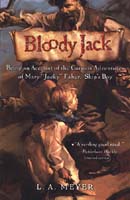 Bloody Jack by L.A. Meyer
Bloody Jack by L.A. Meyer
It is 1797 in London and a young girl has just been put out on the street. All of her family has died of the pestilence and she has nothing but the clothes on her back. Oh, wait! Soon she is robbed of even those by a gang of orphans in need of new clothes. The girl who has her new clothes looks back at her and says, “Well, come on then. And quit your sniveling.” The girl, who narrates this story, writes, “I snuffles and gets up.”
She weeps, she fears, she loses, but she keeps getting up throughout this highly entertaining story of a girl who disguises herself as a boy so she can become a ship’s boy, avoid being hung for thievery, and get enough to eat. I usually demand more than pure entertainment from the books I read–I want to be able to see the world in a new way or learn something thrilling–and I usually don’t like series books, but I finished this book with a single thought: I wanted the next book in the series.
The character of Mary who becomes Jacky leaps from the pages. The endless series of riotous adventurous never seem contrived. All resolutions feel perfectly apt. Danger never disappears, but evil always gets its satisfyingly just desserts.
Bloody Jack will be enjoyed by kids who liked The Unfortunate Series of Events in their younger years, middle school and younger experienced readers who will not be confused by the occasional “guttersnipe” dialect of the narrator (“prolly” for probably; me mum and me dad, etc), high school readers who need a break from fantasy, teen-age angst, and vampire genres, and adults who just like to have fun reading. Attitudes towards the innate differences between the genders are of course amply explored and the romance is tender and true and not excessively graphic. I recommend not trying to find out if the author is male or female until you have read at least one book in the series.
Gaby Chapman







Howard Schwartz is a Professor of English at the University of Missouri- St. Louis, his book Tree of Souls: The Mythology of Judaism won the National Jewish Book Award in 2005. In his most  recent book, Leaves From The Garden of Eden: One Hundred Classic Jewish Tales, Schwartz has gathered fairy tales, folktales, supernatural tales and mystical tales- representing the full range of Jewish folklore, from the Talmud to the present. In the excerpted story below, chosen by Schwartz to help us celebrate Rosh Hashanah, the Jewish New Year, we learn how a young boy’s talent can save the day.
recent book, Leaves From The Garden of Eden: One Hundred Classic Jewish Tales, Schwartz has gathered fairy tales, folktales, supernatural tales and mystical tales- representing the full range of Jewish folklore, from the Talmud to the present. In the excerpted story below, chosen by Schwartz to help us celebrate Rosh Hashanah, the Jewish New Year, we learn how a young boy’s talent can save the day.
Long ago, on the Spanish island of Majorca, a young boy spent most of each day at the shore, sketching the ships that sailed into the harbor. Solomon was a wonderful artist, everyone agreed. His drawings seemed so real that people wondered if the waves in his pictures were as wet as they seemed-or the sun as hot.
His father was a great rabbi who really preferred Solomon to spend his time studying, but Solomon would always slip away to the shore.
A few days before Rosh ha-Shanah, a ship arrived from the city of Barcelona. Solomon overheard one of the sailors talking to a local merchant.
“There’s news from Spain that will make every Jew on the island tremble.”
“What is it?” asked the merchant.
“The king and queen have decreed that all the Jews in the land must give up their religion and become Christian.”
“And if they refuse?”
“Then they must leave at once,” said the sailor.
“But what if they want to stay?”
“Then they lose their lives.”
Solomon was frightened. He didn’t want to leave his beautiful island. He ran home to tell the news to his father, Rabbi Simeon ben Tzemah Duran.
“Must we leave, Father?” asked Solomon.
“I cannot leave, my son,” said his father. “The other Jews look to me for guidance. I must stay until they all escape. But you should go, and I will join you later in Algiers.”
“I won’t leave you,” said Solomon. “You are all I have since Mother died. Surely God will protect us.”
Rabbi Simeon hugged his brave son. “Then let us work together and spread the word that everyone must meet in the synagogue.” They hurried through the village, knocking at the doors of every Jewish home and shop.
When everyone had gathered at the house of prayer, Rabbi Simeon told them about the terrible decree.
“Save us!” they cried out in fear.
They hoped their beloved rabbi would work a miracle. For they knew his prayers had once turned back a plague of locusts. Another time, when crops were withering in the fields, his prayers had brought rain.
“You have only three choices,” Rabbi Simeon told the men. “You can escape by sailing to Algiers. You can stay and pretend to convert, but secretly remain a Jew. Or you can defy the king and queen. As for me, I would rather go to my grave than say I am giving up my religion.” Solomon realized how strong his father was and how he strengthened and comforted his people.
In the days that followed, most of the Jews crowded onto ships, taking very little with them. They saw to it that the women and children took the first available ships. Some Jews stayed and pretended to convert, in order to save their lives. They were known as Conversos, but in secret they continued to follow their Jewish ways.
Only a handful of Jews openly refused to convert. Among them were Solomon’s father and Solomon himself. They planned to leave together, once they were certain that all those who wanted to escape had done so.
By then it was the start of Rosh ha-Shanah. Rabbi Simeon and Solomon and those few who dared enter the synagogue prayed with great intensity, in hope that their names would be written in the Book of Life. For on Rosh ha-Shanah that decision is said to be made on high. Surely God would hear their prayers and guard over them.
All went well the first day, but on the second day of Rosh ha-Shanah, just after the sounding of the shofar, soldiers rushed into the synagogue and dragged them all away. They were cast into a prison cell, where Rabbi Simeon continued to lead the prayers by heart. Solomon would have been terrified if he hadn’s seen how calm his father remained.
None of them slept that night. Even though Rosh ha-Shanah had ended, they stayed awake, praying. The cell was very dark, with only one high window. But at dawn it let a little sunlight in. When Rabbi Simeon saw it, he said, “Have faith, my brothers. For just as there is a bit of light, so there is hope, and I feel that God has heard our prayers and will protect us.”
The guard overheard them and laughed. “You think you have hope. You have just three days to live. Then you die. Let’s see what your God does for you then.”
Rabbi Simeon saw how frightened they were. So he turned to Solomon and said, “Won’t you help us pass the time? Why don’t you draw one of those ships you do so well?”
Solomon couldn’t believe his ears. His father was asking him to draw? Solomon felt in his pocket and pulled out his last piece of chalk. When he looked up, he though he saw a hint of a smle on his father’s face.
Solomon remembered all the ships he had watched from the shore, and he began to draw the one he thought was the most beautiful on the sunlit wall. The wind he drew filled the great sails, and he added barrels of wine and bushels of wheat.
Solomon’s father and the other men watched him draw until the sun set and the prison cell was enveloped in darkness. Then they began to pray to God to save them. Once again, they prayed all night.
The next day, Solomon continued to work on his drawing. Little by little he finished every detail of the ship, and then he drew the sea around it. The waves looked as if they might spill right off the wall and splash onto the floor.
The picture seemed finished, but Solomon didn’t want to stop. His father suggested that he draw the two of them, there on the deck. This Solomon did, and all the men marveled at the fine resemblances. Then the second day in prison ended, and again they prayed throughout the night.
When the sun rose on the third day, one of the men asked Solomon to draw him on the ship, too. “For I would like to be with you.” And one by one, the others made the same request. But when darkness fell, Solomon had not yet finished drawing the last man.
That night they prayed to God with all their hearts, for they knew the execution was set for sunrise the next day. All of the men shook with fear, except for Rabbi Simeon. Solomon took strength from his father, and he, too, remained unafraid.
As soon as the first light of dawn came through the window, Solomon took out his chalk and quickly finished drawing the last man.
Just as he drew the final line, he heard keys jangling. The soldiers were coming to unlock the door to their cell. Then Solomon and all the men would be taken to the courtyard for their execution.
Solomon turned to his father and saw that he was deep in prayer. And, at that very moment, he heard his father pronounce God’s secret name out loud.
Suddenly Solomon could not hear the guards in the hallway, and when he looked down, he saw that he was standing on the deck of the beautiful ship he had drawn on the prison wall.
His father and all the other men in the picture were with him, safely aboard a real ship floating on a real sea. The sails strained against the wind, just as they had in Solomon’s drawing, and the ship sped away from danger.
All the Jews from the prison rejoiced with Solomon and his father- for they knew they were aboard a ship of miracles, on their way to freedom. They would never forget that Rosh ha-Shanah when God had seen fit to save them.
-The Balkans: oral tradition.
ShareThis



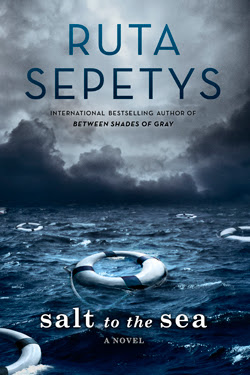


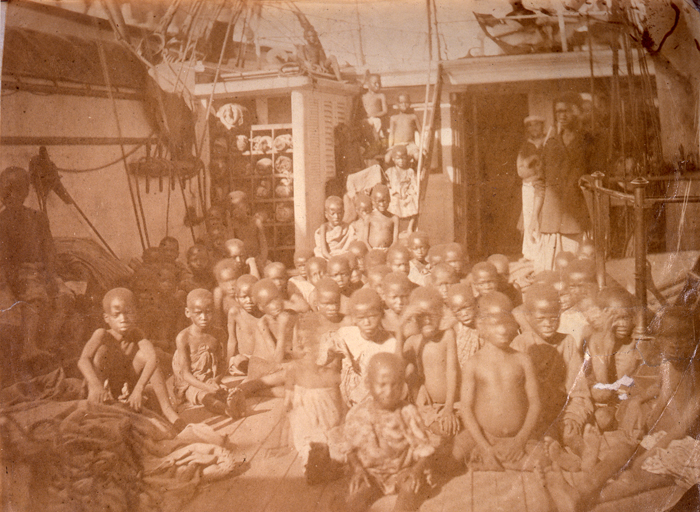



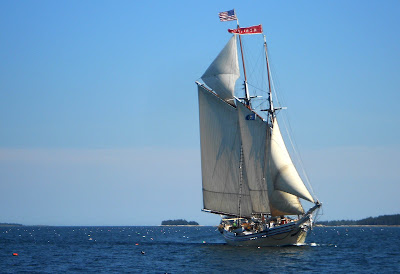





 Bloody Jack by L.A. Meyer
Bloody Jack by L.A. Meyer 


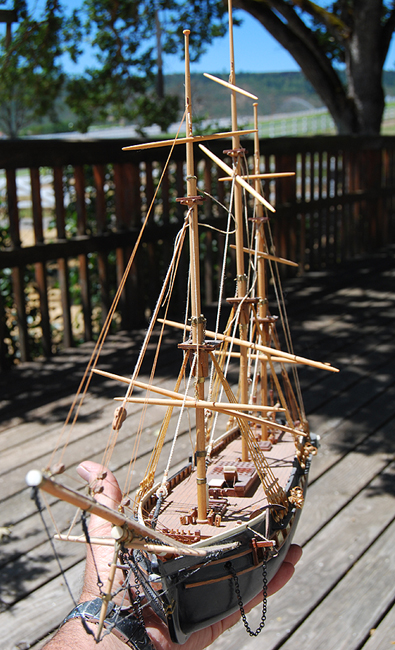











 Did I say how much I LOVE this new camera? Especially the telephoto lens-it's amazing! Here I am hanging out at my favorite Starbucks. I still need a few filters and a macro but they'll come soon enough. I love black and whites just as much as color photos and can never decide which I like better, it all depends on my mood.
Did I say how much I LOVE this new camera? Especially the telephoto lens-it's amazing! Here I am hanging out at my favorite Starbucks. I still need a few filters and a macro but they'll come soon enough. I love black and whites just as much as color photos and can never decide which I like better, it all depends on my mood.
I have never been sailing - always wanted to try it!
I highly recommend it Kathryn .. especially on a schooner!